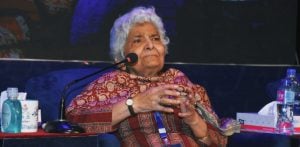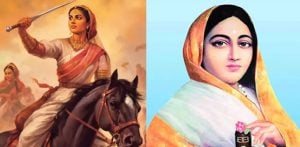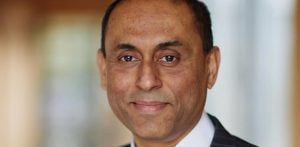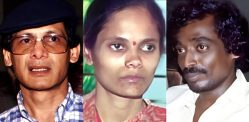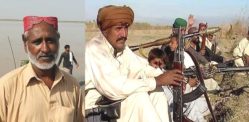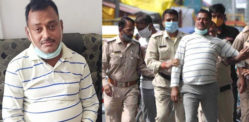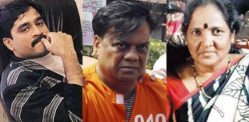He caused the biggest manhunt in Pakistani history
A horrifying aspect of human culture that exposes the lowest reaches of human depravity is the gory world of serial killers.
Pakistan has regrettably had its fair share of infamous murderers who have left a path of horror and sorrow in their wake.
We examine the horrifying tales of eight people in this piece.
Some, whose horrible deeds have brought them notoriety, and others have seemingly gone under the radar.
Each story serves as a frightening reminder of the potential for evil that exists inside the human brain, from the deliberate cruelty of Saulat Mirza to the premeditated brutality of Nazir Ahmad.
Nazir Ahmad

Nazir Ahmad, a 40-year-old Pakistani man, perpetrated a horrific act in which he took the lives of his daughters and stepdaughters while his wife, Rehmat Bibi, bore witness.
The eldest stepdaughter, 25-year-old Muqadas Bibi, faced the ultimate consequence for defying Ahmad’s wishes by marrying a man of her choosing.
He mercilessly ended her life by slashing her throat as she slept.
Subsequently, Ahmad proceeded to extinguish the lives of his other young daughters, Bano Bibi, Sumera, and Humera.
He was driven by the belief that they might follow in their eldest sister’s footsteps.
In his distorted reasoning, he concluded that eliminating them was necessary to safeguard the family’s honour, citing their impoverished circumstances as the only thing worth protecting.
Law enforcement apprehended Ahmad the day following the incident. Speaking on the killing, he told police:
“I slaughtered my dishonoured daughter and the three other girls.
“I wish that I get a chance to eliminate the boy she ran away with and set his home on fire.”
Ahmad’s premeditated actions, including purchasing lethal weapons after praying, underscore the calculated brutality of his crimes.
Sohrab Khan

In 1986, authorities apprehended a Pakistani-born American cardiologist accused of murdering 13 individuals.
Sohrab Aslam Khan, aged 42, formerly served as a fellow at Baylor University Medical Centre Hospital in Dallas during the 70s.
He was taken into custody and formally charged with a string of killings, all of which occurred within a month.
Described as inhuman by Punjab Province Police Chief Sabahuddin Jami, Khan was labelled a “maniac”, who allegedly committed these acts for amusement.
Having returned to Lahore in 1981, Khan admitted to nine of the murders, with four reportedly taking place during a single evening of shootings along Lahore’s main street.
Authorities detailed that Khan targeted his victims, primarily night watchmen, rickshaw drivers, and labourers, using various weapons.
Upon searching Khan’s residence in a suburban area, law enforcement recovered an assortment of sophisticated unlicensed firearms, counterfeit Pakistani passports, and sketches depicting scenes of the murders.
The latest known killing attributed to Khan occurred when a pharmacist was shot dead in a drugstore.
Khan’s driver’s license was discovered at the scene, leading to his arrest.
It was reported that Khan stalked four victims, riding a motorcycle along Lahore’s Mall Road, where he allegedly killed a dogcatcher, an unidentified man, a service station attendant, and a night watchman.
Further violence unfolded a week later when Khan purportedly shot two night watchmen and a rickshaw driver before discarding their bodies in a canal.
Additionally, Khan stands accused of killing a hotel waiter who failed to promptly deliver his order.
Abdul Razzaq

Abdul Razzaq became known as one of the most formidable serial killers in Pakistan.
Despite his unassuming background, Razzaq’s name would become synonymous with terror and tragedy.
In the early 2000s, Razzaq embarked on a spree of abduction, rape, and murder, primarily targeting elderly women in his community.
Over two years, he instilled fear and dread as he eluded authorities, leaving a trail of devastation in his wake.
Whilst the exact number is difficult to pinpoint, it is believed he committed up to seven murders.
Eventually, in February 2003, Razzaq’s reign of terror came to an end when he was apprehended by law enforcement.
His arrest brought a semblance of relief to the traumatised populace of Ahmedpur East, but it also marked the beginning of a lengthy legal process.
Following a thorough investigation and trial, Razzaq was convicted on multiple counts of abduction, rape, and murder.
In April 2006, an anti-terrorism court in Bahawalpur sentenced him to death for his crimes.
Muhammad Yousaf

One of the highly dangerous serial killers in Pakistan was Muhammad Yousaf, who confessed to the killings of 25 women.
The casualties spanned many villages including Kamanala village, Adalatgarha village, and Bhabrianwala village.
Additionally, three other women killed by Yousaf remain unidentified.
He also targeted Azmat Bibi, Sughran Bibi, Rasheeda Bibi, and Nazir Begum, who fortunately survived.
DPO Bilal Siddique Kamyana revealed that Yousaf lured elderly and impoverished women by offering financial assistance under the guise of the Zakat fund or Benazir Income Support Programme.
Subsequently, he would transport them to isolated locations on his motorcycle and brutally end their lives using various methods such as bricks, stones, blunt weapons, or strangulation.
The victims ranged in age from 65 to 75 years old.
The series of murders instilled widespread panic and fear within the community.
In a startling confession, Yousaf claimed to be a cancer patient and cited financial desperation as the motive behind his gruesome crimes.
He expressed he intended to secure funds for his medical treatment through robbery and murder.
Javed Iqbal

Javed Iqbal is one of the most notorious serial killers in history, and perhaps the most famous murderer in South Asian history.
Iqbal admitted to the rape and killing of 100 defenceless boys, all between the ages of six and 16, in a letter he wrote to the police in December 1999.
The letter was also sent to the chief news editor of Khawar Naeem Hashmi in Lahore.
He said that after sexually abusing the victims – most of whom were homeless or orphans – he had dismembered and strangled them.
He would then dispose of their remains in hydrochloric acid vats that he subsequently dumped into a nearby river.
When investigating Iqbal’s house, there were bloodstains on the walls and floor, along with pictures of other victims wrapped in plastic bags and the chain he said he used to strangle them all.
A message stating that the dead in the home had been purposefully kept undisturbed so that authorities would discover them was also left for police to discover.
Additionally, there were two tubs of acid, containing partially disintegrated human remains.
After completing his atrocities, Iqbal wrote in his letter that he now intended to kill himself in the Ravi River.
He caused the biggest manhunt in Pakistani history after police tried in vain to drag the river with nets.
Iqbal was sentenced to death but he and an accomplice, Sajid Ahmed, were discovered dead in their separate cells in 2001.
The official verdict was that the two had hung themselves with bedsheets, despite suspicions that they had both been killed.
Their autopsies showed that they had been beaten before passing away.
Nazroo Narejo
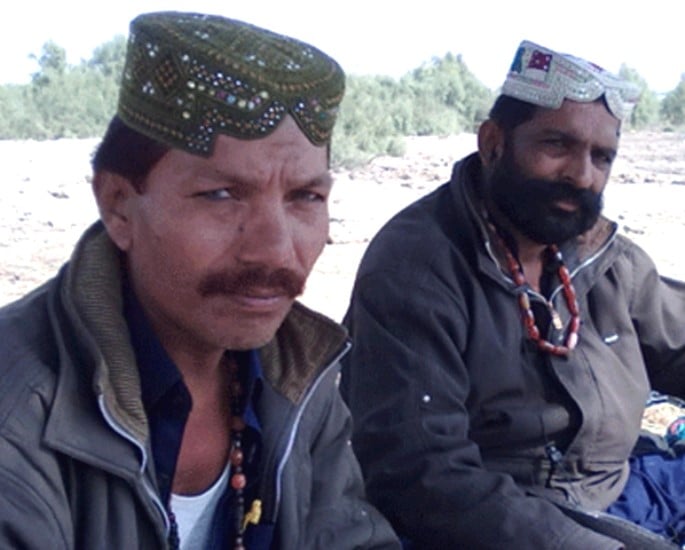
In Sindh, Pakistan, Nazar Ali Nazroo Narejo was a well-known dacoit (arm of band robbers).
He was associated with fear for more than 20 years and was prosecuted in over 200 incidents.
For example, two adults and a young child in Khairpur were killed in August 2013 when Narejo commanded a group of dacoits to launch rockets into the hamlet of Mulla Ismail Khohro.
Narejo was also involved in crimes including murder, abduction for ransom, highway robbery, and pillage in the Sindh and Punjab regions.
To try and stop him, the government put out a PKR 20 million bounty for his capture.
Ultimately in 2015, Nazroo and his associates were slain in a confrontation with Tanveer Ahmed Tunio, the SSP of the Sindh Police’s Sukkur Region.
During this operation, his son Rab Rakhio Narejo and brother-in-law Sarwar were also killed.
Amir Qayyum

Amir Qayyum experienced a tumultuous childhood marked by abandonment and violence. However, he still ended up being one of the more violent serial killers.
Following the departure of his father, Qayyum found refuge with his uncle, Dr. Shahid.
However, exhibiting aggressive behaviours from an early age, he faced expulsion from school and later his own home due to physical altercations with his siblings.
Tragedy struck on September 25, 2003, when Shahid and a companion fell victim to a fatal attack by unknown assailants.
Despite the subsequent arrest of a suspect named Hafiz Abid on February 28, 2004, Abid took his own life while in police custody.
Motivated by a desire for vengeance, Qayyum embarked on a spree of violence targeting homeless individuals from June to July 2005.
Employing bricks and stones as his weapons of choice, he claimed the lives of 14 men, earning him the moniker “The Brick Killer”.
Ultimately, his reign of terror came to an end when he was apprehended following an assault with a stone.
Convicted of his crimes, Qayyum received the death penalty on May 10, 2006.
Saulat Mirza

Saulat Mirza was a Pakistani individual convicted of murder, specifically targeted killings, and was associated with the Muttahida Qaumi Movement (MQM).
In 1997, he was found guilty of a triple homicide and was sentenced to death for his role in the targeted assassination of Shahid Hamid, a bureaucrat, along with his driver Ashraf Brohi and his guard Khan Akbar.
Following his arrest in 1998, and his return from Bangkok, Mirza was handed the death penalty by the Anti-Terrorism Court in 1999.
In response to pleas from Mirza’s family, including press conferences and the release of a confession video implicating Altaf Hussain in the murders, the execution was halted by presidential order.
Despite the rejection of a final appeal for clemency, Mirza was executed in 2015.
As we reflect on the stories of these notorious serial killers of Pakistan, we are confronted with the chilling reality of human cruelty.
Their acts of violence and terror have left scars on the fabric of society, traumatising communities and instilling fear in families.
Yet, in examining their stories, we also find the determination of law enforcement agencies and the justice system to bring these perpetrators to account for their crimes.
May the memory of their victims be honoured, and may their stories never be forgotten.




